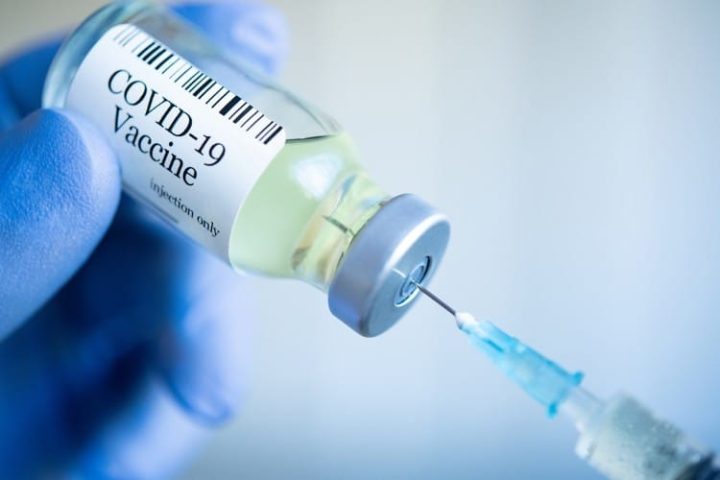
The European Medicines Agency (EMA) has announced it is investigating three new possible side effects that may be linked to mRNA COVID-19 vaccines made by Pfizer-BioNTech and Moderna (Spikevax).
Europe’s medicines watchdog, an agency of the European Union in charge of the evaluation and supervision of medicinal products, issued statements on Wednesday confirming that its Pharmacovigilance Risk Assessment Committee (PRAC) is looking into whether three medical conditions are connected to the administration of COVID-19 shots that employ mRNA technology following a “small number” of incidences.
One of the three potential side effects being investigated is a dermatologic disorder called erythema multiforme, an allergic reaction that manifests as reddish skin lesions and may also affect mucous membranes in internal body cavities. According to the National Institute of Health (NIH), in general, the cause of the disorder is unknown, but it frequently occurs in association with the herpes simplex virus, suggesting an immunologic process initiated by the virus. In half of the cases, the triggering agents appear to be medications, per NIH.
The two other conditions the PRAC is assessing are related to the kidneys, with one of them, glomerulonephritis, linked to inflammation of tiny filters in the organ (called glomeruli). The usual causes of the disorder include infections and immune diseases. Another one, nephrotic syndrome, is a disorder causing the kidneys to leak too much protein in the urine. Nephrotic syndrome is usually caused by damage to the clusters of small blood vessels in the kidneys that filter waste and excess water from the blood. The PRAC statement says that “affected patients may present with bloody or foamy urine, oedema (swelling of the eyelids, feet or abdomen), or fatigue.” It is also noted that some of the vaccine recipients experienced a relapse of preexisting kidney conditions.
Also, PRAC is looking into menstrual disorders in vaccinated women. Even though it is stated that “no causal association between COVID-19 vaccines and menstrual disorders have been established so far,” and that such disorders are “very common in the general population,” the condition still made it to the list of concerning side effects. To those women who experience unexpected vaginal bleeding (e.g. in postmenopausal women) or who are concerned about prolonged or severe menstrual disturbances, PRAC recommends “to seek medical advice.”
PRAC states that as of July 29, 2021, a total of 244,807 cases of suspected side effects were reported to EudraVigilance, the EU database used for monitoring and analyzing suspected side effects from the drugs and vaccines following inoculation with Pfizer-BioNTech jab. Of those cases, 4,198 reported a fatal outcome. By the same date, about 330 million doses of that type of shot had been given to people in Europe.
As of the same date, a total of 48,788 cases of suspected side effects with Spikevax were reported; 392 of these were fatal outcomes. By the same date, about 43.5 million doses of Spikevax had been administered in Europe.
Both reports stress that they only describe suspected side effects in individuals, i.e., medical events observed following the use of a vaccine. “The fact that someone has had a medical issue or died after vaccination does not necessarily mean that this was caused by the vaccine. This may have been caused, for example, by health problems not related to the vaccination,” it is stated.
However, the dramatically increased number of reported severe side effects following the vaccination has caused some medical professionals to look into the issue of the so-called bio-distribution of the vaccine.
The U.S. Centers for Disease Control and Prevention (CDC) explains that “COVID-19 mRNA vaccines give instructions for our cells to make a harmless piece of what is called the “spike protein.” The spike protein is found on the surface of the virus that causes COVID-19.” Once the instructions (mRNA) get inside the upper arm muscle cells, the cells use them to make the protein piece. After the protein piece is made, the cell is said to “break down the instructions and get rid of them.” Meaning, only the muscle cells are affected by the vaccine, and it does not go anywhere else in the body.
However, mRNA may actually travel further, and affect other organs and tissues, studies show. Canadian immunologist and vaccine researcher Byram Bridle, Ph.D, associate professor of Viral Immunology at the University of Guelph, has gained access to Pfizer’s biodistribution study from the Japanese regulatory agency showing spike protein in inoculated people is also found in the spleen, liver, adrenals, and ovaries, where its concentration was the highest.
Bridle says:
The SARS-CoV-2 has a spike protein on its surface. We now know spike protein gets into circulation. We thought the spike protein was a great target antigen; we never knew it was a toxin. So by vaccinating people, we are inadvertently inoculating them with a toxin.
Bridle emphasized that the spike protein actually crosses the blood-brain barrier and thus causes neurological damage, which explains why fatal blood clots are often seen in the brain. Elaborating on the implications of these findings, he remarked:
When in circulation, the spike protein can bind to the receptors that are on our platelets and the cells that line our blood vessels. When that happens, it can do one of two things: it can either cause platelets to clump, and that can lead to clotting — that’s exactly why we’ve been seeing clotting disorders associated with these vaccines. It can also lead to bleeding, and of course, the heart is involved, which is part of the cardiovascular system, so that is why we are seeing heart problems.
Dr. Robert Malone, an inventor of mRNA technology used by Pfizer-BioNTech and Moderna, has warned that mRNA vaccines remain “biologically active,” i.e., get bio-distributed throughout the body, and the spike protein that they cause the body to produce is not “harmless,” but “cytotoxic,” i.e., it can damage cells.
Moreover, the reported Pfizer-BioNTech animal trials also showed bio-distribution of the vaccine, with high concentrations mainly observed in the liver, adrenal glands, spleen, and ovaries, with maximum concentrations observed at 8-48 hours post-dose.




